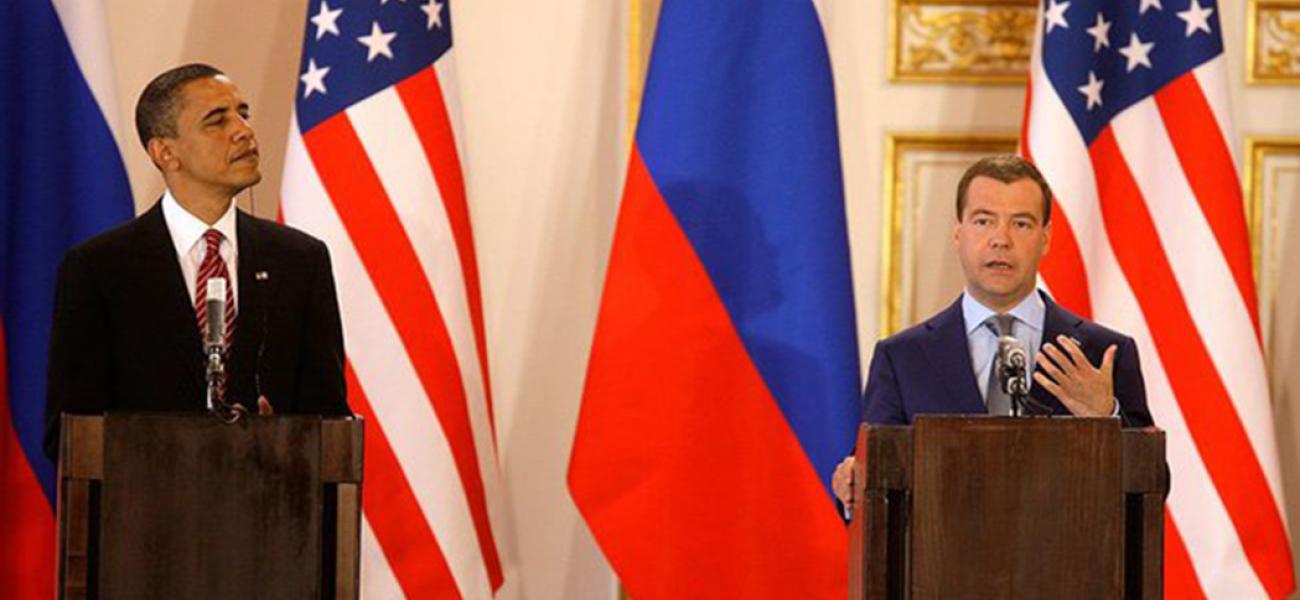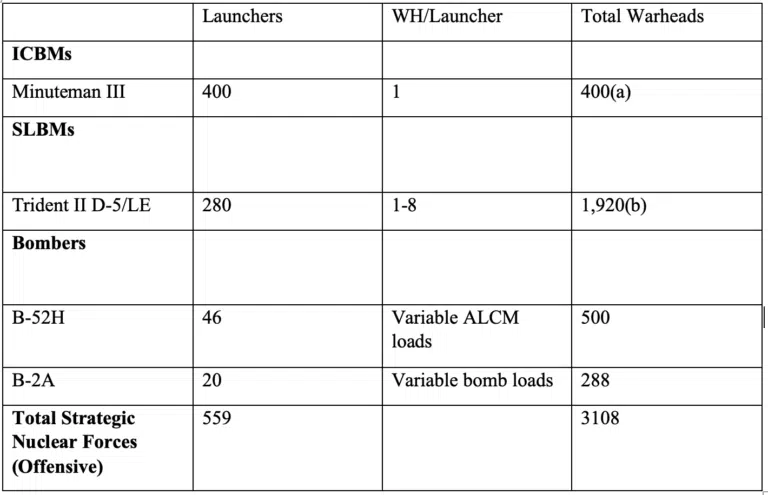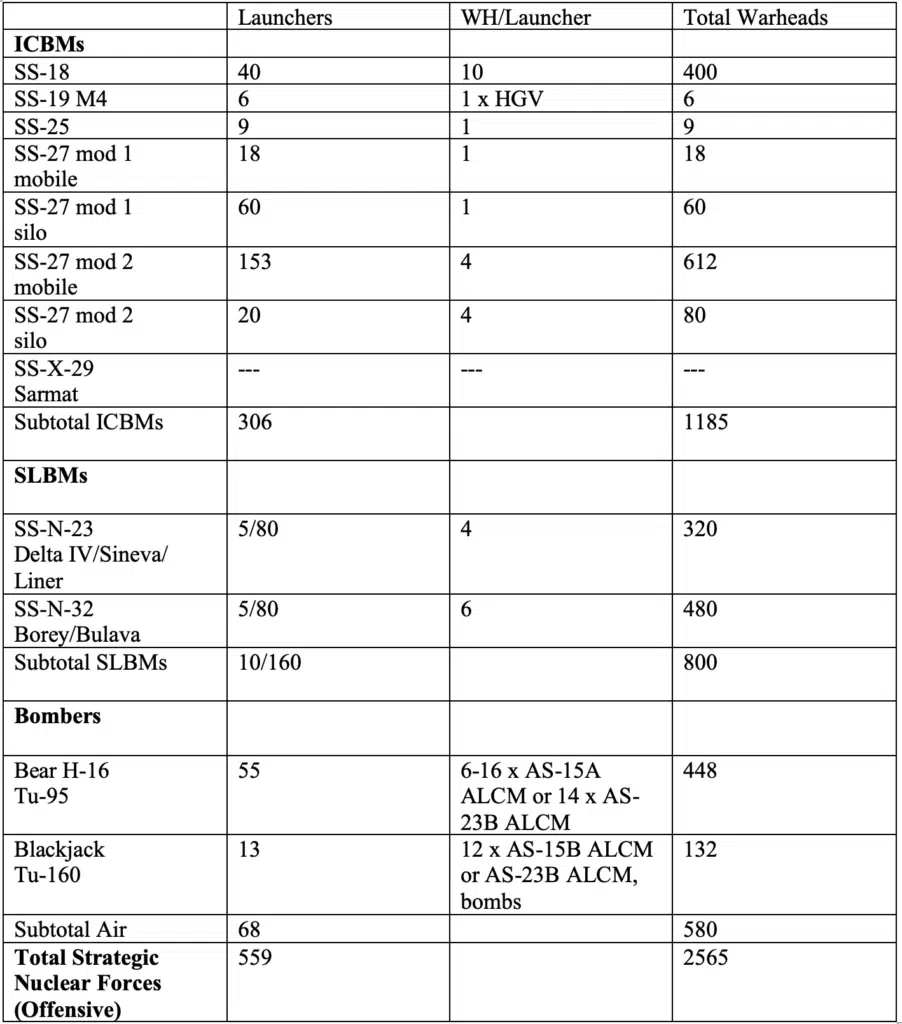
Reviving Arms Control, Post-Ukraine: Why New START Still Matters
This article was originally published by the Bulletin of the Atomic Scientists.
Will the continuing war in Ukraine and resulting toxic relations between Russia and NATO push nuclear arms control into the dustbin of history? Hopefully, the war in Ukraine will soon end in a negotiated peace settlement, and something resembling normal US-Russian diplomatic relations will return. Doubtless the transition from war to peace will not be easy, and Russia, Ukraine, and NATO will all have their dissatisfactions with the peace agreement. Nevertheless, other important issues of international security and world order cannot be postponed indefinitely.
One of the most critical issues requiring imminent future discussion and resolution is the challenge of nuclear arms control. Even before Russia’s war on Ukraine, the Russian–American nuclear arms control dialogue had reached a state of paralysis. But any post-war attempt to revive arms control will face four major challenges: the rise of China as a major nuclear power; new technology, including hypersonic missiles and drone swarms, that stresses strategic stability; US military budgetary constraints; and the real possibility of increased nuclear proliferation. These new challenges will require new arms control approaches, including, at the least, some method of including China in any efforts to further extend the US-Russia New START limits on strategic nuclear weapons.
Arms control was already all but dead. Long before the Russian invasion of Ukraine in February, the US-Russia arms control regime was crumbling. Both countries had withdrawn from the Intermediate-Range Nuclear Forces (INF) Treaty that previously precluded deployment of nuclear or conventional missiles with ranges from 500 to 5,500 kilometers. They also finalized their withdrawals from the Open Skies Treaty last year. Russian President Vladimir Putin showcased a number of advanced nuclear delivery systems in development or ready for deployment in his address to the Russian Federal Assembly in 2018. Putin continued to object to US missile defenses deployed in NATO Europe, describing these ship-based and shore-located antimissile systems as potential threats to Russia’s nuclear deterrent. Finally, both Russia and NATO continue flights near one another’s territory, and close encounters of sea-based forces are not uncommon.
When the Biden administration took office, the last nuclear arms control agreement still standing was New START, which was scheduled to expire in February 2021. Fortunately, unlike the Trump administration, Biden’s moved rapidly to agree to a five-year extension and Russia concurred. Its value lies less in its symbolism or historical status than it does in its potential for revitalizing the Russian-American nuclear arms control process. If New START cannot be the cornerstone for a rebooted nuclear arms control regime, it will be an historical footnote but not a favorable foundation for future progress.
Nuclear arms control is not something to be done for its own sake. Arms control is a necessary component for any viable US national security strategy. Progress in nuclear arms control between the Russians and the Americans is a necessary condition for other steps to reduce the risks of future nuclear war. The United States and Russia together control more than 90 percent of the world’s nuclear weapons. Any hope of restraining vertical proliferation (larger arsenals among existing nuclear weapons states) or horizontal proliferation (the spread of nuclear weapons to additional state or nonstate actors) depends upon joint leadership from Washington and Moscow. Regional rivalries in the Middle East and Asia could increase the number of nuclear weapons states outside of Europe or create new incentives for currently non-nuclear powers to acquire nuclear arsenals. Newer nuclear weapons states are more likely than current nuclear powers to have forces that are first-strike vulnerable, and thus maintained on hair trigger alert for prompt launch in case of even an ambiguous warning of attack.
The baseline for the future of arms control. If New START is the basic building block for resuming a cooperative security relationship with Russia, what does it entail? As indicated in figure one, New START restricts the numbers of operationally deployed nuclear warheads for each state to 1,550 weapons on a maximum number of 700 deployed launchers (intercontinental ballistic missiles, or ICBMs; submarine launched ballistic missiles, or SLBMs; and heavy bombers). Current Russian and American strategic nuclear forces are compliant with these New START limits. But since New START counting rules treat each bomber as a single weapon, although bombers actually carry variable numbers of weapons, the official New START figures understate the total numbers of weapons actually deployed by each side.
US Strategic Nuclear Forces – 2022

Russian Strategic Nuclear Forces – 2022

It is important to realize that, within a common ceiling on the numbers of weapons and launchers deployed under New START limits, US and Russian strategic nuclear forces are structured very differently. Whereas Russia’s forces emphasize land-based strategic missiles (ICBMs), the United States is more reliant upon submarine-launched ballistic missiles (SLBMs). This difference in emphasis is likely to continue in future planning and deployments. Both Washington and Moscow have committed themselves to future nuclear modernization plans that will replace or refurbish each arm of their venerable nuclear triad of land-based, sea-based and airborne launchers. This situation results partly from bureaucratic inertia, but also from the conviction that a three-legged deterrent force provides more flexibility for military planners and a more complicated attack target for hostile forces.
Throughout the Cold War and subsequently, efforts to rationalize US nuclear war plans ran up against the competing priorities of policy makers, military planners, and expert analysts inside and outside of government. US declaratory policy for deterrence was not always consistent with deployment policy for its use of nuclear weapons, should deterrence fail. Broadly speaking, alternative models for nuclear employment included: a force sufficient to inflict unacceptable retaliatory destruction on the society of the attacker; forces and command systems for flexible targeting and escalation control, including some options for lower yield weapons; counterforce superiority relative to any prospective attacker; and antimissile defenses capable of damage limitation even against major attacks. There were variations around these themes, but the evolving US nuclear targeting plan (SIOP) was put into effect by target-planning staffs matching available weapons to prospective targets—imperfectly, at best, given the disparate objectives of policy makers. But most important, no credible plan for anything resembling “victory” at an acceptable cost was available to American or Russian nuclear planners.
US strategic analysis sometimes failed to recognize that deterrence depends for its success not only on the cleverness of the deterrer, but on the psychology and strategic thinking of the object of deterrence threats. Countries are not billiard balls, and leaders’ estimates of what will deter their competitors are often wide of the mark. Intelligence estimates may err in their assessments of enemy intentions, capabilities, or both. History, before and after the beginning of the nuclear age, is littered with deterrence failures based on faulty intelligence, stereotypic images of other states and their leaders, and many varieties of motivational bias and wishful thinking. States’ perceptions of one another’s military-strategic doctrines are subjected to mirror imaging or other sources of distortion. In the case of Russia, for example, some even argued that Russian military thinking treated nuclear weapons as just another point on a linear continuum of violence and not as a nonlinear departure from military rationality. However, at their historic meeting at Reykjavik in 1987, Presidents Ronald Reagan and Mikhail Gorbachev agreed that a nuclear war could not be won and should never be fought. This long road to nuclear deterrence sobriety for both the United States and Russia was not achieved without some dangerous detours (the Cuban missile crisis of 1962, for example, or the Able Archer military exercise of 1983). Future nuclear powers, without benefit of Cold War or other learning experience in the fragility of deterrence, may behave less prudently.
The 21st century challenges to effective arms control. This familiar nuclear choreography of the preceding century is going to be shaken up by at least four 21st-century political and technological realities. First, the rise of China as a major nuclear power is no longer in doubt. China is modernizing its land- and sea-based nuclear-missile forces and bombers, developing the potential for a regionally dominant and globally competitive nuclear arsenal. Within the present decade, the United States may be faced with two nuclear peer competitors in Moscow and Beijing. This development will raise important questions about US nuclear force sizing and modernization.
Both the quality and quantity of nuclear weapons, of various ranges and yields, will be up for discussion among American defense planners in government and outside experts. In addition, the United States and its allies will have to consider how China’s rise affects American and allied conventional force modernization and the United States’ ability to counter China’s regional “A2AD” (anti-access, area denial) capabilities. A regional conventional war involving Chinese and American forces raises the possibility of nuclear escalation. Another issue is the maturing alliance between Russia and China. Although they do not necessarily agree on all strategic issues, Moscow and Beijing concur in their desire to push back against the rules-based international order favored by the United States, NATO, and their treaty allies in the Indo-Pacific.
Second, new technology will put stress on prior assumptions about the stability of nuclear deterrence based on assured retaliation. Hypersonic missiles might shorten the time between launch detection and the impact of attacking warheads, or they might confuse antimissile defenses by using evasive tactics. Drone swarms may be employed either for offensive or for defensive purposes to confuse warning and command systems, to strike precisely at high value counterforce or counter-command targets, or to locate previously undetectable launch platforms (submarines, for example). Nuclear coercive diplomacy could be preceded or accompanied by cyberattacks against military communications and control systems or other military and civil infrastructure. Attacks on military systems could be supported by advanced tools for disinformation, propaganda, and other deceptive “likewar” efforts, creating false narratives to manipulate public perceptions. Beyond the possibility of cyberattacks during nuclear crises or conflicts, war in space is now an acknowledged risk for countries, including the United States, that depend on satellites for warning, communications, reconnaissance, geolocation, and other vital national security support functions. Both Russia and China have tested satellites capable of rendezvous and inspection of other states’ satellites in various orbits; presumably the same capabilities could be used for anti-satellite attacks if necessary. New arms control regimes for the use of space will be a priority for spacefaring nations in the years ahead.
Another technology challenge for nuclear-strategic stability will be improvements in the performance of dedicated antimissile and air defense systems. Emerging missile defenses will not repeal the fundamentals of the nuclear revolution in warfare, but they will challenge the Cold War model of guaranteed supremacy for strategic nuclear offensive forces relative to antimissile defenses. Lasers and drones are only two of the technologies capable of providing improved performances for antimissile and air defenses, especially at the tactical and theater levels of warfare. Preclusive nationwide antimissile and air defenses are a larger challenge for the U.S and other major powers with vast territories to defend. But even less-than-perfect missile defenses could complicate the calculations of prospective attackers, making first strikes seem less appealing as an option even under duress.
In short: Nuclear deterrence can no longer be isolated from space or cyber deterrence, or from space or cyberwar.
There is a third challenge to the United States in pursuing arms control and strategic stability: Deciding how much is enough for American defense preparedness and for nuclear weapons specifically. The US defense budget dwarfs all others at a time of considerable stress in the American economy. The US nuclear arsenal is also expected to provide extended deterrence for allies in Europe, the Middle East and Asia. Without the American nuclear umbrella, some allies might consider more seriously the option of developing their own nuclear arsenals. In Asia, this risk is especially salient in view of China’s rising capabilities for nuclear coercion and conventional warfare. Regardless of the perceived strategic need for various forces or weapons systems, competing demands from domestic priorities will place limits on future US defense budgets. Moreover, within defense budgets, difficult trade-offs will be required between current needs for the various services and future capabilities. With regard to nuclear forces, expenditures for deployed and reserve weapons and launchers are only part of the equation. Also requiring significant resources are the components of the US nuclear infrastructure, including weapons laboratories, and defense contractors who support Pentagon research and development.
Finally, too much complacency exists about the pace of nuclear proliferation. Admittedly, some of the most pessimistic predictions made during the Cold War about the eventual spread of nuclear weapons were wide of the mark. However, it would be wrong to infer from that nuclear danger is in a condition of stasis. To take one case: A nuclear Iran would almost certainly increase the interest of other Middle Eastern powers in developing their own nuclear forces. Another case: the already crowded nuclear competition in Asia, which includes Russia, China, India, Pakistan, and North Korea (and the United States, given its interests in the Indo-Pacific region). A more expansive China or a more nuclear-assertive North Korea could increase popular support in South Korea or even Japan for its own national nuclear force, despite the historic nuclear allergy of Japan and the defense guarantees to both countries provided by the US nuclear umbrella. There is also the lesser, but still dangerous, possibility of nonstate actors acquiring nuclear weapons or materials. Admittedly, the United Nations Treaty on the Prohibition of Nuclear Weapons, signed in 2017 and entered into force in 2021, shows governments’ widespread recognition of a continuing nuclear danger. But none of the current nuclear-weapons states shows any interest in dismantling its nuclear arsenal, and several existing nuclear powers are increasing their arsenals in size and quality.
Arms control is not optional. The premature burial of nuclear arms control is both politically unsound and militarily dangerous. Resumption of Russia–American nuclear arms control talks is a necessary condition for maintaining peace in Europe and globally, for containing the nuclear arms race, and for discouraging additional nuclear weapons spread. It is also imperative, however daunting the process, that China be included as soon as favorable political winds permit. Herein lies an important challenge for the Biden administration and its successors. US geostrategic priorities must avoid driving Russia and China into an enduring anti-American and anti-NATO alliance. Reaching out to both countries by means of military-to-military and other expert arms control talks could be an important first step in this regard.
Arms control, both old style and new age, remains relevant—and indeed necessary. Arms control negotiations must be resumed as soon as there is a negotiated settlement in Ukraine. Moreover, given China’s increasing nuclear capabilities, the United States and Russia must expand their New START negotiations to include China.
Stephen J. Cimbala
Stephen J. Cimbala is Distinguished Professor of Political Science at Penn State University, Brandywine.
Lawrence J. Korb
Lawrence J. Korb is a senior fellow at the Center for American Progress. He is also an adjunct professor of security studies at Georgetown University.
The opinions expressed herein are solely those of the authors. Photo by Kremlin.ru shared under a Creative Commons license.

